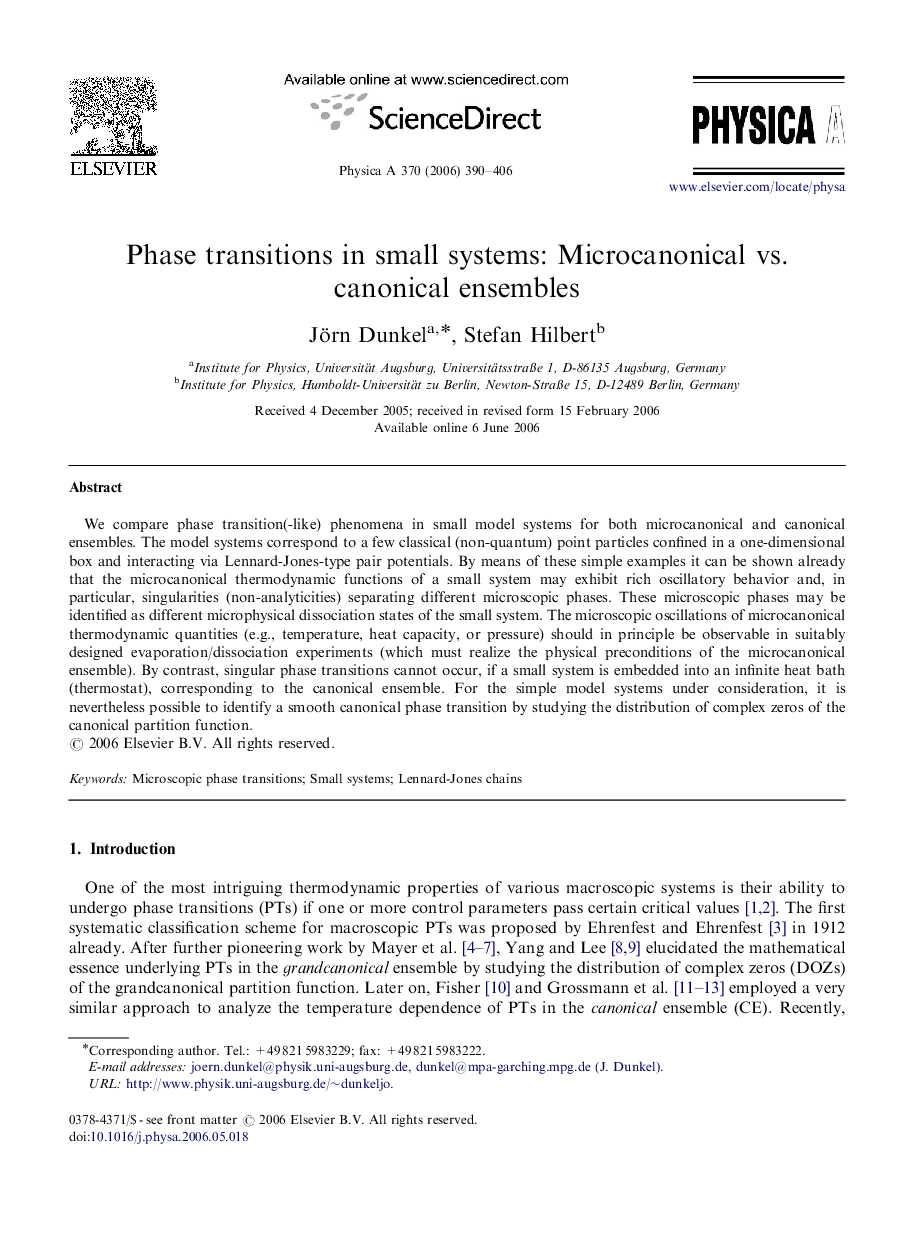| Article ID | Journal | Published Year | Pages | File Type |
|---|---|---|---|---|
| 979669 | Physica A: Statistical Mechanics and its Applications | 2006 | 17 Pages |
We compare phase transition(-like) phenomena in small model systems for both microcanonical and canonical ensembles. The model systems correspond to a few classical (non-quantum) point particles confined in a one-dimensional box and interacting via Lennard-Jones-type pair potentials. By means of these simple examples it can be shown already that the microcanonical thermodynamic functions of a small system may exhibit rich oscillatory behavior and, in particular, singularities (non-analyticities) separating different microscopic phases. These microscopic phases may be identified as different microphysical dissociation states of the small system. The microscopic oscillations of microcanonical thermodynamic quantities (e.g., temperature, heat capacity, or pressure) should in principle be observable in suitably designed evaporation/dissociation experiments (which must realize the physical preconditions of the microcanonical ensemble). By contrast, singular phase transitions cannot occur, if a small system is embedded into an infinite heat bath (thermostat), corresponding to the canonical ensemble. For the simple model systems under consideration, it is nevertheless possible to identify a smooth canonical phase transition by studying the distribution of complex zeros of the canonical partition function.
